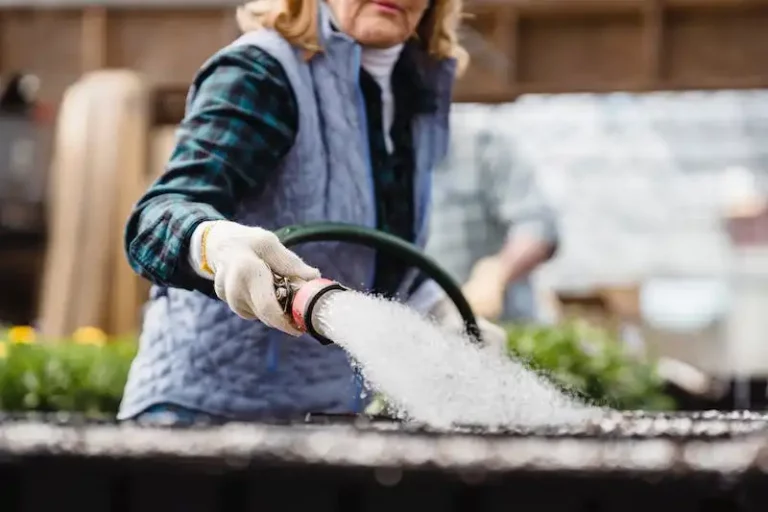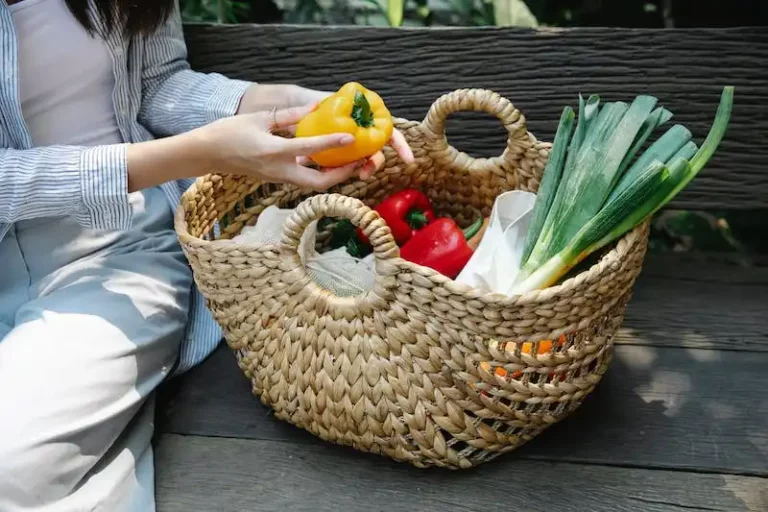Have you ever dreamed of having a beautiful garden in your backyard? Well, if you have a damp or low-lying area that doesn’t drain well, you might be able to turn it into a stunning bog garden. A bog garden is a specially crafted area that allows certain plants to grow and thrive. In this article, we will guide you through the process of creating your very own bog garden step by step.
One of the first things you will need to do is choose a suitable spot for your bog garden. Look for an area that stays damp and doesn’t drain well, such as a low-lying space in your backyard. Once you have found the perfect spot, it’s time to start building your bog garden!
The first step in building your bog garden is to clear the area of any pre-existing plants or debris. You may need to dig out the soil to create a shallow depression for your bog garden. Once the area is cleared, you can start filling it with a special type of soil called sphagnum peat moss. Sphagnum peat moss is known for its ability to hold water, making it the ideal choice for a bog garden.
After you have filled your bog garden with sphagnum peat moss, it’s time to plant your bog-loving plants. These plants are adapted to grow in wet and waterlogged conditions, so they will thrive in your bog garden. Some popular bog-loving plants include pitcher plants (Sarracenia purpurea), Venus flytraps (Dionaea muscipula), and sundews (Drosera spp.). These insect-eating plants will not only add visual interest to your bog garden but also help keep pesky insects at bay.
Finally, don’t forget to water your bog garden regularly. Bog-loving plants require constant moisture, so make sure to water them whenever the soil starts to dry out. Keep in mind that rainfall alone may not be enough to keep your bog garden sufficiently watered, especially during dry spells. So, be prepared to water your bog garden manually if necessary.
A backyard bog garden is a unique and beautiful addition to any outdoor space. It not only creates a habitat for a variety of interesting plants but also attracts birds and other wildlife. So, why not create your own bog garden and enjoy the beauty of nature right in your own backyard?
How to create a bog garden for wildlife
A bog garden is a mini-wetland that can be created in your backyard to attract and provide a home for a variety of wildlife. Bogs naturally absorb water, allowing a range of plants and animals to thrive. By building a bog garden, you can create an ecological haven for birds, insects, and other creatures.
Here are some tips on how to create a bog garden:
| 1. | Choose a suitable location |
| 2. | Prepare the ground |
| 3. | Build raised beds or containers |
| 4. | Use a mixture of sand, gravel, and grit |
| 5. | Add sphagnum moss or peat moss |
| 6. | Plant a variety of bog plants |
| 7. | Provide plenty of water |
To create a bog garden, choose a location that receives at least six hours of direct sunlight each day. This will ensure that the plants and wildlife in your garden have enough light to thrive. It’s best to avoid areas with trees or overhanging branches, as they can provide too much shade and prevent the bog garden from drying out.
Once you have chosen a location, prepare the ground by removing any grass, weeds, or other vegetation. Dig small holes to create the uneven surface that is typical of a bog garden. You can also add a layer of sand or gravel to improve drainage and prevent waterlogging.
Next, build raised beds or containers to hold the soil mixture. You can use wooden barrels or even old bathtubs. Just make sure that the containers have drainage holes to allow excess water to escape.
In the containers, create a mixture of sand, gravel, and grit. This will provide the right conditions for bog plants to grow. Add some sphagnum moss or peat moss to help retain moisture.
When it comes to choosing plants for your bog garden, there are plenty of options to consider. Bog plants like Sundews (Drosera), Pitcher Plants (Sarracenia), and Marsh Marigolds (Caltha palustris) are great choices. You can also plant water-loving asters and goldenrods to add color to your garden.
Keep in mind that bog plants have specific care needs, so do some research to learn more about their growing requirements. They often need to be watered regularly and may require a specific soil pH. Nurseries and gardening centers can provide more information on caring for bog plants.
Once you have planted your bog garden, provide plenty of water to maintain the moist conditions that bog plants need. Rainwater is the best choice, as it is naturally soft and does not contain chemicals or minerals that can harm the plants.
Creating a bog garden is a DIY project that can provide a natural habitat for wildlife in your backyard. With a little research and planning, you can build your own wetland and attract a variety of birds, insects, and other creatures. Enjoy the beauty and biodiversity that a bog garden brings!
What is a bog garden
A bog garden is a type of garden that can be created in containers or in specific areas of a backyard. It is an ecological series of wetlands that can be filled with sanders, sphagnum moss, and plastic planter bags. Bog gardens can be created to grow a range of different plants, providing a special place where people can view and appreciate the naturally draining wetland habitat.
In a backyard, a bog garden can be created using a container without drainage holes, such as a barrel or a giant planter. Kamala Lenihan, an expert in creating container gardens, explains that when building a bog garden, it is important to use a range of different supplies and materials. This can include sand, grit, sphagnum moss, and perl.
When creating a bog garden, it is important to plan the layout of the plants and the different areas that will be created. Some areas could be filled with sand and gravel to create a mini-bog, while others could be filled with sphagnum moss to create a damp surface.
The plants that can be grown in a bog garden are different from those that can be grown in other areas of the garden. Some popular plants for bog gardens include goldenrods, white center, and sundews. These plants are adapted to living in damp and wetland areas and can thrive in the unique conditions provided by a bog garden.
One of the advantages of a bog garden is that it can be created in areas where water drainage is limited or problematic. By creating a bog garden, the excess water can be directed towards the wetland plants, helping to drain the area and prevent waterlogging.
Overall, a bog garden is a unique and special type of garden that can be created outdoors. By providing a suitable environment for a range of wetland plants, it can create a beautiful and ecologically diverse space. Whether it’s a small container garden or a larger backyard project, a bog garden is a fascinating addition to any outdoor space.
Why do we need bog gardens
A bog garden is a unique and interesting feature that can be created in your backyard. But why do we need bog gardens? There are several reasons to consider:
- Providing a habitat for sundews: Sundews are carnivorous plants that thrive in boggy conditions. By creating a bog garden, you are providing a suitable environment for these plants to grow.
- Attracting birds and other wildlife: Bogs are known to attract a variety of birds and insects. By creating a bog garden, you are creating a space where these creatures can find food, shelter, and water.
- Absorbing rainwater: Bogs act as natural water storage systems, absorbing excess rainwater and preventing flooding. By creating a bog garden, you are helping to manage water runoff.
- Adding visual interest to your backyard: A bog garden can be a visually stunning addition to your backyard. With a variety of plants, including colorful asters and perennials, your bog garden can become a focal point in your outdoor space.
- Improving soil conditions: Bogs have unique soil compositions, often consisting of a mixture of sand, perlite, and sphagnum moss. By creating a bog garden, you are introducing these soils to your backyard, which can benefit other plants that prefer well-drained soil.
- Creating a DIY project: Building a bog garden can be a fun and rewarding DIY project. Whether you have a small space or a large backyard, there are different methods and techniques to consider when creating your bog garden.
So, if you have a space in your backyard where water tends to accumulate or a spot where you have limited gardening options, consider creating a bog garden. Not only will it add beauty and interest to your outdoor space, but it will also provide a unique habitat for various plants and wildlife.
Which plants can I grow
When creating a backyard bog garden, there are a wide range of plants that you can choose from to make your space more attractive and provide a habitat for wildlife. Here are some plants to consider:
- Carnivorous plants: Carnivorous plants such as Venus flytraps and pitcher plants are ideal for bog gardens. They are known for their ability to trap and digest insects.
- Goldenrods: Goldenrods are a great choice for backyard bog gardens as they attract butterflies and birds with their bright yellow flowers.
- Gunnera: Gunnera, also known as “giant rhubarb,” is a large and dramatic plant that can add a unique touch to your bog garden.
- Asters: Asters are colorful, daisy-like flowers that can provide a pop of color to your bog garden. They attract bees and butterflies and are great for attracting pollinators.
- Sphagnum moss: Sphagnum moss is an essential component of a bog garden as it helps to retain moisture and provides a perfect substrate for other plants.
When selecting plants for your bog garden, it’s important to choose species that are adapted to wetland habitats. It’s also a good idea to check with your local nurseries for plants that are native to your area, as they will be better adapted to the local climate and soil conditions.
If your backyard doesn’t have a natural water source, you can create a container bog garden by digging a hole and lining it with plastic or using a container with holes in the bottom for drainage. This allows you to create a wetland habitat in a limited space.
Remember to provide plenty of water to your bog garden, especially during dry periods. You can water it manually or install a watering system to keep the soil consistently damp.
By growing a bog garden, you can create a unique and beautiful space in your backyard that attracts wildlife and adds a touch of natural beauty. Plus, it’s a great way to learn more about wetland ecosystems and contribute to their preservation.


